- 040 12345678
- info@wealthzonetech.com
BUILDING MANAGEMENT SYSTEM
Building Management System or Building Control Systems facilitates for integration of different building utility systems into one platform and helps for a centralized monitoring & controlling of the distributed systems from one location.
The utility system includes Electrical & Mechanical systems such as HVAC, UPS, Generator, Fire Protection, Access Control, Lighting, Security, Elevators etc.
While monitoring and controlling from a single location the systems helps for energy savings, reduced operational & maintenance costs, improved working conditions, environmental benefits etc. The intelligent building system brings together all the functional systems into single network service for control, monitor & manage the system enabling easy and effective operations.
The open system adopted in the Building Management Systems and availability of common industry standards made easier for all third party systems to integrate into one common platform.
A BMS is presently a common system employed in large building primarily to manage the room temperature, humidity level, Co2 level to ensure a comfort and productive work environment. The HVAC system typically attached to BMS is largely account for the 40% of energy consumption in the building. A building with a comprehensive BMS system attached with its lighting systems as well can ensure an energy saving of 30-40% of the total energy consumed other wise.Primarily a BMS system comprises of the Graphical user Interfaces or software for the end user to interact with the system. Different controllers, DDCs, are used for controlling the different units and the same will be attached to an Integrator/router to communicate with the software. The filed devices like sensors, switches, actuators will be placed in the different locations of the site to do necessary input& output functions to & from the controller.
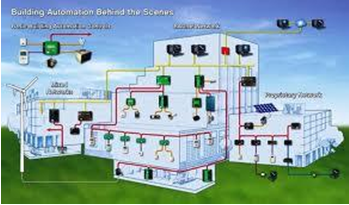

DOOR PHONES

A Videophone is a Telephone with a Video display, capable Audio communication between people in real-time. ideophone service provided the first form of video telephony, later to be followed by videoconferencing, WebCams, and finally high- definitiontelepresence. At the dawn of its commercial deployment from the 1950s through the 1990s, video telephony also included ‘image phones’ which would exchange still images between units every few seconds over conventional POTS-type telephone lines, essentially the same as slow scan TV systems.
The development of advanced technology video codec’s and high bandwidth Internet telecommunication services allowed videophones to provide high quality color service between users almost anyplace in the world that the Internet is available, often at low or nominal costs. In the present day videophones have become widely available at reasonable cost, although not widely used in everyday communications for a variety of reasons.
However they are particularly useful to the deaf and speech-impaired who can use them with sign language and are becoming increasingly popular for educational instruction, telemedicine and to those with mobility issues.
FIRE ALARM AND FIRE FIGHTING SYSTEM
Fire Alarm System offered by us is designed using latest technology in order to high quality and reliable performance of the system. The advanced software used in this Electronic Alarm System is widely appreciated for its features like power sensor, fast alerts, high performance and dependability. Our Electronic Alarm System is vital in any emergency situations like fire, robbery or any other natural calamity. This Electronic Alarm System is widely used in corporate, hospitals, educational institutes and many more.
• Features of Electronic Alarm System
• Efficient Burglar Monitoring
• Control Access from unknown persons
• Highly reliable
• Fast detection & ringing of alarm
• Provide 24/7 alert services
• Advanced software
• Vigorously designed alarm systems
Available In Smoke Detectors & Fire Alarm System
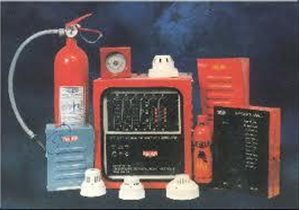
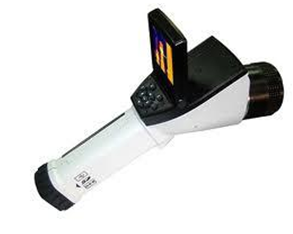
HOME AUTOMATION

Home Automation embraces a host of functions that can be remotely controlled: Lighting from a central command panel or from, individual touch plates in every room. This can include lights that change color, dimmers, switches that are sensitive to movement and timed lighting (part of the security installation). This is extendable to the garden, outhouse, swimming pool or garage. Curtains and blinds that respond to your preference without having to get up. Temperature/climate control with presets that can be overridden. This can apply to the whole house or to zones within the house. Security including CCTV, locks on outside doors, automatic gates, lighting to simulate your presence in the house while you are away.
You can also have access to the controls and the CCTV camera on your smart phone. Entertainment is also enhanced by remotely recording a TV programme you forgot to set before you went to Sydney for your holiday. If there is anything else, tell us. It is more than likely we can find a way of automating it. Amazingly all these functions can be reduced to their simplest, most intuitive form on a variety of control units including remote handsets, touch plates, and smart phones. Intelligent configuration makes it very easy to find what you want or make a command.
INTERCOM
An Intercom (intercommunication device), talkback voice communications system for use within a building or small collection of buildings, functioning independently of the public telephone network. Intercoms are generally mounted permanently in buildings and vehicles. Intercoms can incorporate connections to public address loudspeaker systems ,walkie talkies , telephones, and to other Intercom Systems. Some Intercom Systems incorporate control of devices such as signal lights and door latches.
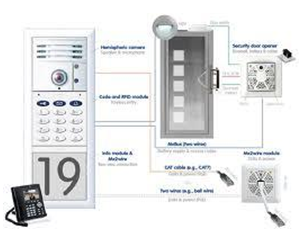
WATER PURIFICATION SYSTEM
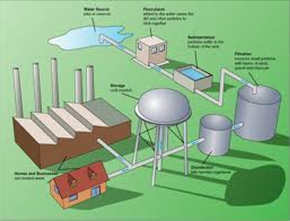
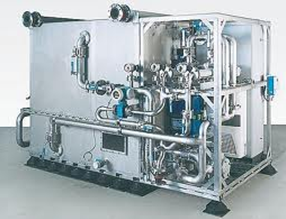
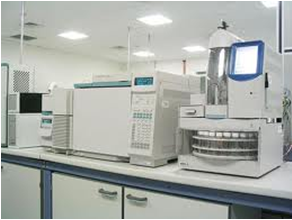
Water Purification is the process of removing undesirable chemicals, biological contaminants, suspended solids and gases from contaminated water. The goal is to produce water fit for a specific purpose. Most water is purified for human consumption (drinking water) but water purification may also be designed for a variety of other purposes, including meeting the requirements of medical, pharmacology, chemical and industrial applications. In general the methods used include physical processes such as filtration,sedimentation, and distillation, biological processes such as slow sand filters or biologically active carbon, chemical processes such asflocculation and chlorination and the use of electromagnetic radiation such as ultraviolet light.
The purification process of water may reduce the concentration of particulate matter including suspended particles, parasites, bacteria,algae, viruses, fungi; and a range of dissolved and particulate material derived from the surfaces that water may have made contact with after falling as rain.
The standards for drinking water quality are typically set by governments or by international standards. These standards will typically set minimum and maximum concentrations of contaminants for the use that is to be made of the water.
It is not possible to tell whether water is of an appropriate quality by visual examination. Simple procedures such as boiling or the use of a household activated carbon filter are not sufficient for treating all the possible contaminants that may be present in water from an unknown source. Even natural spring water – considered safe for all practical purposes in the 19th century – must now be tested before determining what kind of treatment, if any, is needed. Chemical and microbiological analysis, while expensive, are the only way to obtain the information necessary for deciding on the appropriate method of purification.
According to a 2007 World Health Organization (WHO) report, 1.1 billion people lack access to an improved drinking water supply, 88 percent of the 4 billion annual cases of diarrheal disease are attributed to unsafe water and inadequate sanitation and hygiene, and 1.8 million people die from diarrheal diseases each year. The WHO estimates that 94 percent of these diarrheal cases are preventable through modifications to the environment, including access to safe water.[1] Simple techniques for treating water at home, such as chlorination, filters, and solar disinfection, and storing it in safe containers could save a huge number of lives each year.[2] Reducing deaths from waterborne diseases is a major public health goal in developing countries.

